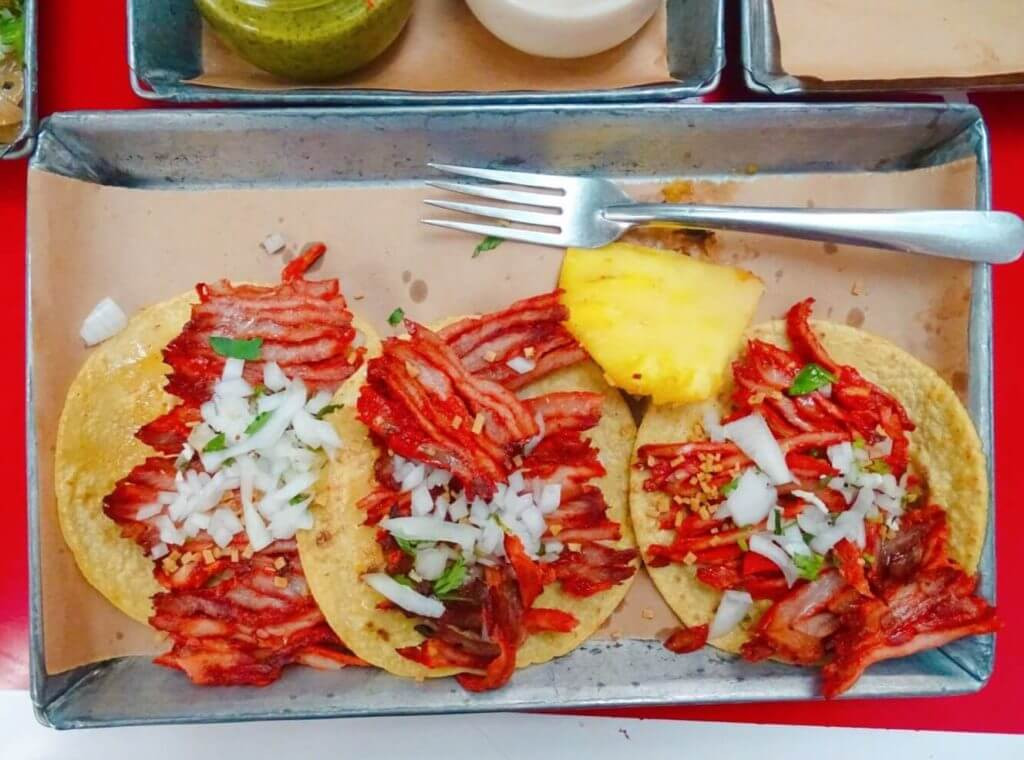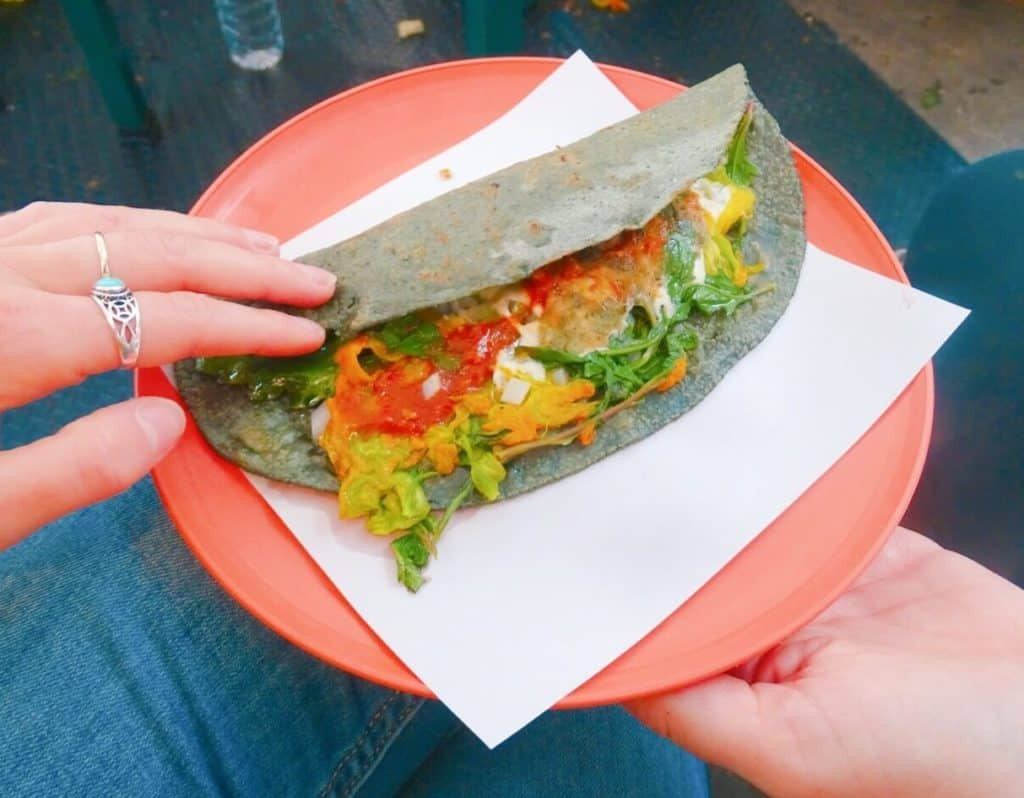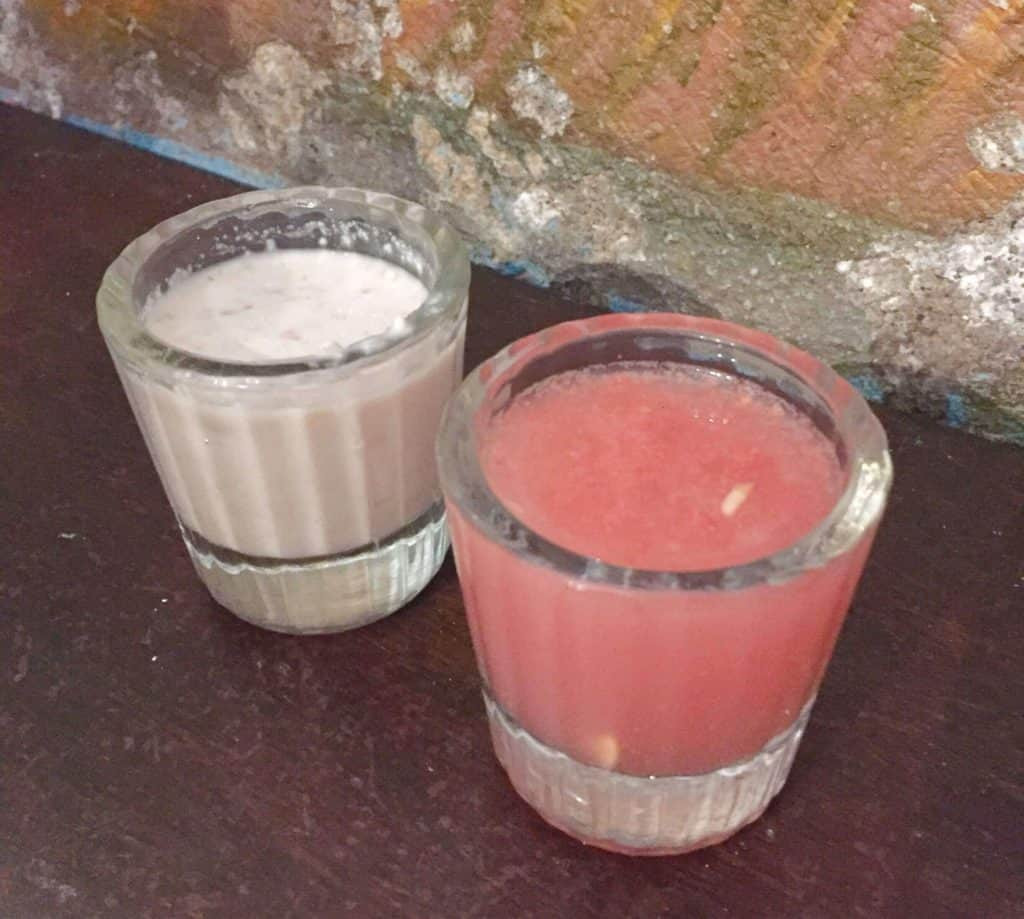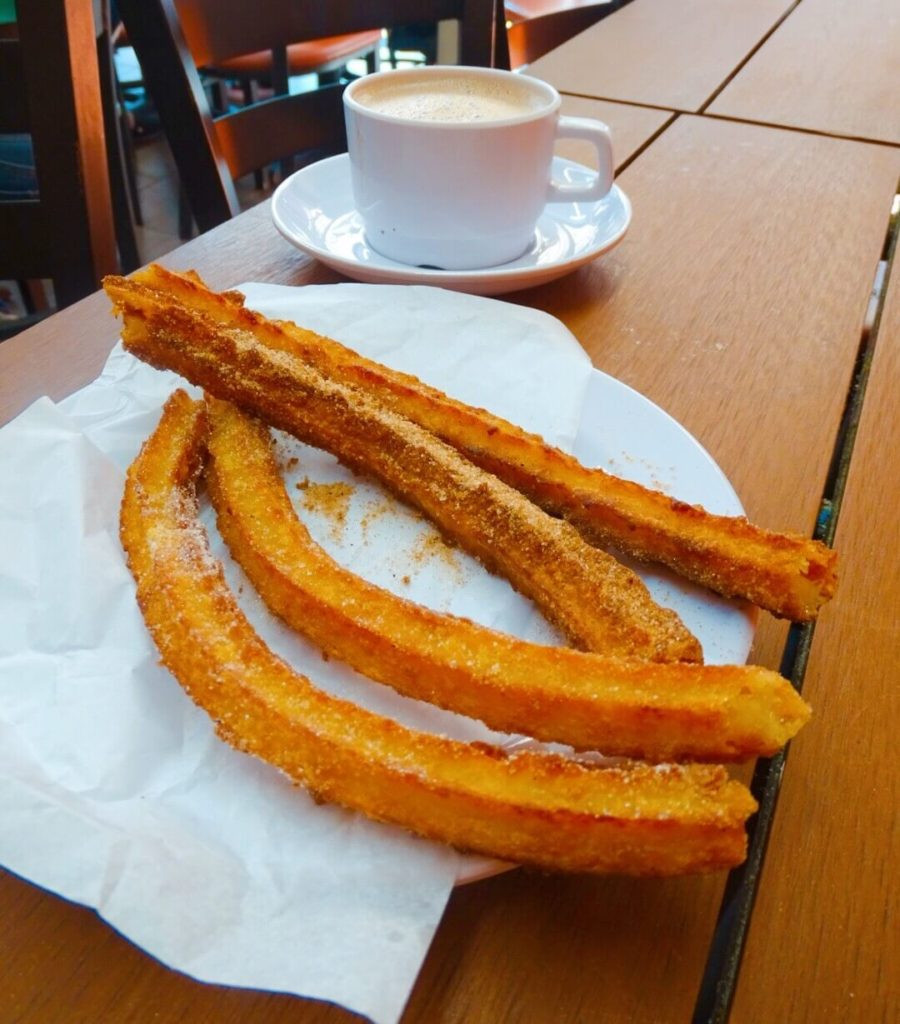Are you curious about What Do They Eat In Mexico? Gaymexico.net is here to guide you through the vibrant and diverse culinary landscape of Mexico, with a special focus on LGBTQ+ travelers seeking authentic and delicious experiences. We’ll explore everything from traditional dishes to modern culinary innovations, ensuring you have a fantastic gastronomic journey.
1. Understanding Mexican Cuisine
Mexican cuisine is an incredibly rich and diverse culinary tradition, deeply rooted in history and culture. It’s a fusion of indigenous ingredients and techniques with influences from Spanish, African, and other European cuisines. The base of most Mexican food is corn. It is also used to make tortillas without which we wouldn’t have tacos, enchiladas or quesadillas. According to research from Forbes, in April 2018, corn is life or as the Mexicans would say ‘no pais sin maiz’ (literally: there’s no country without corn).
1.1. Staple Ingredients
What are the most common ingredients in Mexican cuisine?
Corn, beans, and chili peppers are the holy trinity of Mexican cooking. These ingredients have been cultivated in Mexico for thousands of years and form the basis of countless dishes. Other staples include tomatoes, avocados, onions, garlic, and a variety of herbs and spices.
1.2. Regional Variations
How does Mexican food vary by region?
Mexico’s vast geography and diverse cultures have led to significant regional variations in cuisine.
- Oaxaca: Known for its complex moles (sauces made with chili peppers, chocolate, and spices), tlayudas (large, crispy tortillas topped with various ingredients), and mezcal (a smoky spirit made from agave).
- Yucatán: Famous for its cochinita pibil (slow-roasted pork marinated in achiote paste), sopa de lima (lime soup), and habanero peppers.
- Puebla: Celebrated for its chile en nogada (poblano pepper stuffed with fruit and meat, topped with walnut sauce and pomegranate seeds), mole poblano, and cemitas (sesame seed rolls filled with various ingredients).
- Northern Mexico: Renowned for its carne asada (grilled beef), burritos, and flour tortillas.
- Coastal Regions: Offer a wide variety of seafood dishes, such as ceviche (marinated raw fish), fish tacos, and shrimp cocktails.
1.3. Pre-Hispanic Influences
How did pre-Hispanic cultures shape modern Mexican cuisine?
Before the arrival of the Spanish, indigenous cultures like the Aztecs and Mayans had already developed sophisticated culinary traditions.
- Corn: The most important crop, used to make tortillas, tamales, and atole (a hot corn-based beverage).
- Beans: A staple source of protein, often cooked in stews or refried.
- Chili Peppers: Used to add flavor and heat to dishes, with countless varieties ranging from mild to fiery.
- Insects: A traditional source of protein, still consumed in some regions today, such as chapulines (grasshoppers) and escamoles (ant larvae).
- Techniques: Grinding corn with a metate (a stone tool), cooking in underground ovens (pibs), and using clay pots for simmering stews.
2. Must-Try Mexican Dishes
Mexico offers a vast array of dishes that cater to every palate. Here are some must-try options that you should sample during your visit:
2.1. Tacos: The Cornerstone of Mexican Street Food
What makes tacos so popular in Mexico?
Tacos are arguably the most iconic Mexican food. They consist of a tortilla (usually corn, but sometimes flour) filled with various ingredients. Tacos al pastor are typically small and you’ll want at least three of these to make a meal, while larger tacos can be eaten solo for a small meal.
 Delicious tacos al pastor in Mexico City
Delicious tacos al pastor in Mexico City
What are the most popular taco fillings?
- Al Pastor: Marinated pork cooked on a vertical spit, served with pineapple, onions, and cilantro.
- Carnitas: Slow-cooked, shredded pork. Whole pigs are used so beware it could be any part of the animal.
- Asada: Grilled beef, typically seasoned with salt and pepper.
- Barbacoa: Slow-cooked lamb or goat, often steamed in an underground oven.
- Cochinita Pibil: Slow-roasted pork marinated in achiote paste (Yucatán style).
- Fish Tacos: Freshly-battered pescado (fish) tacos served with coleslaw and a squirt of lime. Camaron (shrimp) and Marlin tacos are also excellent.
- Vegetarian Options: Flor de calabaza (squash blossoms), nopales (cactus), and huitlacoche (corn smut).
2.2. Mole: A Symphony of Flavors
What is mole, and why is it so special?
Mole is a complex sauce made with chili peppers, chocolate, spices, and other ingredients. Mole poblano is my favourite, made with chocolate. If you don’t know, chocolate actually originated in Mexico as a bitter drink before the Spaniards took it back to Europe and mixed it with milk and sugar. According to research from Aura Cocina, white mole can be made at cooking class and pink rose mole (made with rose petals and sesame seeds) which I tried while visiting Taxco.
2.3. Enchiladas: Tortillas in Sauce
What are enchiladas, and what are some popular variations?
Enchiladas are tortillas filled with meat, cheese, or vegetables, rolled up, and covered in sauce. Enchiladas are usually topped with tomato-based sauce while enmoladas are made with mole.
What are the most common types of enchilada sauces?
- Salsa Roja: A red sauce made with tomatoes, chili peppers, and spices.
- Salsa Verde: A green sauce made with tomatillos, chili peppers, and cilantro.
- Mole Poblano: A complex sauce made with chili peppers, chocolate, spices, and nuts.
- Enfrijoladas: Tortillas topped with frijoles (mashed black bean paste). They’re often topped with cheese and fried eggs, too.
2.4. Tamales: Steamed Corn Dough
What are tamales, and how are they made?
Tamales are made with steamed corn dough (masa), stuffed inside a corn husk with other ingredients inside such as chicken, mole, salsa verde or roja. You can also get sweet tamales which are bright pink and flavoured with guava.
2.5. Pozole: A Hearty Soup
What is pozole, and what are the different regional variations?
Pozole is one of the top Mexican foods to try, known for its rich flavour. While a tomato soup filled with corn kernels might sound veggie-friendly, pozole is usually made with chicken broth. However, many vegetarian restaurants in Mexico City will make it without. Ask before ordering.
2.6. Tostadas: Crispy Delights
What are tostadas, and how are they typically served?
Tostadas are crispy, fried tortillas topped with ingredients. I love a seafood tostada served with fresh prawns (camaron) and avocado, seasoned with a dash of lime.
2.7. Quesadillas: Cheesy Goodness
What are quesadillas, and what fillings can you find?
Quesadillas can also come with other fillings. If you’re veggie, you can order fillings like flor de calabaza (in English, squash flower).
 Blue corn quesadillas in Mexico
Blue corn quesadillas in Mexico
2.8. Elotes and Esquites: Corn on (and off) the Cob
What are elotes and esquites, and how are they prepared?
Corn in its pure form is called maiz but when it’s cooked, it’s called elote. When served with mayonnaise, chilli and cheese, it’s called elotes y esquites. I love this Mexican street food snack. Who knew that corn could be so tasty and moreish when simply slathered in sauce and cheese?
3. Exploring Regional Specialties
To truly experience the depth of Mexican cuisine, venture beyond the popular dishes and explore the unique specialties of each region.
3.1. Oaxaca: Land of Moles and Mezcal
What makes Oaxacan cuisine so distinctive?
Oaxaca is known as the land of the seven moles. These complex sauces are made with a variety of chili peppers, spices, chocolate, and nuts, each with its own unique flavor profile. Other Oaxacan specialties include tlayudas (large, crispy tortillas topped with various ingredients), chapulines (grasshoppers), and tejate (a cold, foamy drink made with corn, cacao, and other ingredients). Mezcal is also a must-try in Oaxaca, as the state is the center of mezcal production.
3.2. Yucatán: A Mayan Culinary Legacy
What are some traditional dishes from the Yucatán Peninsula?
Yucatán cuisine is influenced by Mayan traditions, with dishes like cochinita pibil (slow-roasted pork marinated in achiote paste), sopa de lima (lime soup), and huevos motuleños (fried eggs served on tortillas with black beans, cheese, and ham). The use of habanero peppers is also prevalent in Yucatecan cooking, adding a fiery kick to many dishes.
3.3. Puebla: Home of Chile en Nogada
What makes Puebla a culinary destination?
Puebla is famous for its chile en nogada, a poblano pepper stuffed with fruit and meat, topped with walnut sauce and pomegranate seeds. This dish is traditionally served during the months of August and September, when the ingredients are in season. Other Pueblan specialties include mole poblano, cemitas (sesame seed rolls filled with various ingredients), and chalupas (small, thick tortillas topped with salsa, cheese, and onions).
3.4. Mexico City: A Melting Pot of Flavors
What culinary experiences can you find in Mexico City?
Mexico City is a culinary melting pot, with influences from all over the country and the world. You can find everything from traditional street food to high-end restaurants serving innovative cuisine. Some must-try dishes in Mexico City include tacos al pastor, chilaquiles (fried tortilla chips simmered in salsa), and esquites (corn kernels served with mayonnaise, cheese, and chili powder).
4. Mexican Drinks: From Tequila to Agua Frescas
No culinary journey is complete without exploring the diverse range of Mexican beverages.
4.1. Tequila and Mezcal: Agave Spirits
What is the difference between tequila and mezcal?
Tequila is made from blue agave while Mezcal originates from the state of Oaxaca and if you go there (spoiler: you should), you can visit the plantations, learn how it made and, most importantly, sample it. Mezcal has a very smoky flavour which I don’t love, personally. As experts will tell you, all tequilas are mezcals but not all mezcals are tequilas.
4.2. Agua Frescas: Refreshing Fruit Waters
What are agua frescas, and what are some popular flavors?
Translating as fresh water, these refreshing non-alcoholic drinks are served at almost every restaurant, cafe and street stand. My favourite flavours are lemon and chia seed, tamarind, jamaica (hibiscus flower) and guayaba (guava).
4.3. Horchata: Sweet Rice Milk
What is horchata, and what does it taste like?
Technically an agua fresca, this is one of the best Mexican drinks to try. Horchata is a plant milk flavoured with cinnamon. It’s incredibly sweet so I couldn’t drink it every day, but it’s refreshing on a hot day. Horchata is one of the oldest Mexican drinks, dating back to the 13th century.
4.4. Pulque: Ancient Fermented Drink
What is pulque and where can you find it?
Pulque is an alcoholic Mexican drink made from the sap of the maguey plant. It’s milky, slightly lumpy and can’t be bottled as it will explode.
Try it at a pulqueria in Mexico City to sample different flavours like chocolate and marzipan. If the creamy version turns you off, try fruit pulque instead. Flavours like berry are tangy and refreshing.
 Pulque in Mexico City
Pulque in Mexico City
4.5. Mexican Hot Chocolate: A Warm Delight
How is Mexican hot chocolate different from other hot chocolates?
While Oaxaca is the most iconic place to drink hot chocolate, you’ll find it all over Mexico. If you’re in Mexico City, visit cafe chain Tierra Garat and order the chilli hot chocolate.
Mexcian hot chocolate is traditionally made with water rather than milk. In fact, mixing chocolate with milk was a Spanish invention. However, the drink doesn’t lose any flavour by making it with water (and usually you can ask for milk instead nowadays) because it’s so rich already.
5. Navigating the Mexican Food Scene
To make the most of your culinary adventures in Mexico, keep these tips in mind:
5.1. Street Food Safety
Is it safe to eat street food in Mexico?
Street food is an essential part of Mexican cuisine, but it’s important to take some precautions to avoid getting sick.
- Choose vendors with high turnover: This indicates that the food is fresh and the ingredients are being used quickly.
- Look for clean stalls: Ensure that the vendor is using clean utensils and surfaces.
- Avoid raw or undercooked foods: Especially seafood and meat.
- Drink bottled water: Avoid tap water and ice made from tap water.
5.2. Tipping Etiquette
What is the appropriate amount to tip in Mexico?
Tipping is customary in Mexico, especially in restaurants and bars. A standard tip is 10-15% of the bill.
5.3. Dietary Restrictions
How can you navigate dietary restrictions in Mexico?
If you have dietary restrictions, such as vegetarian, vegan, or gluten-free, it’s important to communicate this to your server. Many restaurants offer vegetarian options, and some can accommodate vegan or gluten-free requests.
5.4. Ordering in Spanish
What are some useful Spanish phrases for ordering food?
- ¿Qué me recomienda? (What do you recommend?)
- Soy vegetariano/a. (I am vegetarian.)
- Sin carne, por favor. (No meat, please.)
- ¿Es picante? (Is it spicy?)
- Una mesa para [number] personas, por favor. (A table for [number] people, please.)
- La cuenta, por favor. (The bill, please.)
6. LGBTQ+ Friendly Dining Experiences in Mexico
Mexico is becoming increasingly LGBTQ+ friendly, and many cities offer welcoming and inclusive dining experiences.
6.1. LGBTQ+ Hotspots
Where are some LGBTQ+-friendly dining areas in Mexico?
- Mexico City: The Zona Rosa neighborhood is known for its LGBTQ+ bars, clubs, and restaurants.
- Puerto Vallarta: A popular LGBTQ+ destination with a vibrant dining scene.
- Guadalajara: Offers a growing number of LGBTQ+-friendly establishments.
6.2. Recommended Restaurants and Bars
Can you recommend some specific LGBTQ+-friendly restaurants and bars?
Gaymexico.net provides comprehensive listings of LGBTQ+-friendly establishments in Mexico, including restaurants, bars, clubs, and hotels. Be sure to check our website for the latest recommendations and reviews.
7. Sweet Treats: Mexican Desserts
Don’t forget to indulge in Mexico’s delightful desserts.
7.1. Churros: Fried Dough Pastries
What are churros, and how are they typically served?
The first sweet entry in this Mexican food guide is something you’ve probably heard of before. Churros originated in Spain but are now incredibly popular in Mexico. The locals will (of course) tell you that theirs are the better version, served with cinnamon sugar and a dip of either chocolate, cajata (Mexican caramel sauce) or condensed milk.
 Churros in Puebla, Mexico
Churros in Puebla, Mexico
7.2. Flan: Creamy Custard
What is flan, and what makes it so popular?
Flan is a creamy custard dessert with a caramel topping. It’s a classic Mexican dessert that’s loved for its smooth texture and rich flavor.
7.3. Tres Leches Cake: A Milk-Soaked Delight
What is tres leches cake, and what does it taste like?
Tres leches cake is a sponge cake soaked in three kinds of milk: evaporated milk, condensed milk, and heavy cream. It’s a sweet and moist dessert that’s perfect for special occasions.
7.4. Capirotada: Bread Pudding
What is capirotada, and how is it traditionally made?
Capirotada is a bread pudding made with bread, cheese, nuts, dried fruits, and a spiced syrup. It’s a traditional Lenten dish that’s often served during Easter.
8. Food Festivals and Culinary Events
If you’re a food lover, consider attending one of Mexico’s many food festivals and culinary events.
8.1. Guelaguetza (Oaxaca)
What is the Guelaguetza festival in Oaxaca?
Guelaguetza is an annual indigenous cultural event in Oaxaca, Mexico that features traditional dances, music, and food from the state’s various regions. It’s a great opportunity to sample Oaxacan cuisine and experience the state’s rich culture.
8.2. Morelia En Boca (Michoacán)
What is the Morelia En Boca food festival?
Morelia En Boca is a food festival in Morelia, Michoacán that showcases the state’s culinary traditions. It features cooking demonstrations, tastings, and workshops with renowned chefs.
8.3. Wine Harvest Festivals (Baja California)
What are the wine harvest festivals in Baja California?
Baja California’s wine harvest festivals celebrate the region’s growing wine industry. They feature wine tastings, food pairings, and live music.
9. Conclusion: A Culinary Adventure Awaits
Exploring the food scene in Mexico is an adventure in itself, offering a deep dive into the country’s culture and traditions. Whether you’re savoring street tacos or sampling regional specialties, Mexican cuisine will tantalize your taste buds and leave you with unforgettable memories.
As you plan your culinary journey, be sure to visit Gaymexico.net for more recommendations, travel tips, and LGBTQ+-friendly resources. Come hungry and enjoy the feast!
Address: 3255 Wilshire Blvd, Los Angeles, CA 90010, United States.
Phone: +1 (213) 380-2177.
Website: gaymexico.net.
10. Frequently Asked Questions (FAQ) About Mexican Food
Here are some frequently asked questions about Mexican cuisine:
1. What is the most popular dish in Mexico?
Tacos are arguably the most iconic Mexican food. They consist of a tortilla (usually corn, but sometimes flour) filled with various ingredients.
2. What is the spiciest food in Mexico?
The spiciness of Mexican food varies greatly depending on the region and the dish. Some of the spiciest ingredients include habanero peppers, chile de árbol, and serrano peppers. Dishes like camarones a la diabla (deviled shrimp) and chicken tinga can be quite spicy.
3. Is Mexican food healthy?
Mexican food can be healthy, depending on the ingredients and preparation methods. Many traditional dishes are made with fresh vegetables, lean proteins, and healthy fats. However, some dishes can be high in calories, sodium, and fat.
4. What is a traditional Mexican breakfast?
A traditional Mexican breakfast might include huevos rancheros (fried eggs served on tortillas with salsa), chilaquiles (fried tortilla chips simmered in salsa), or tamales (steamed corn dough filled with various ingredients).
5. What is a good vegetarian dish to try in Mexico?
Some popular vegetarian dishes in Mexico include quesadillas with flor de calabaza (squash blossoms), tacos with nopales (cactus), and pozole with mushrooms.
6. What is the best way to experience Mexican cuisine?
The best way to experience Mexican cuisine is to venture beyond the tourist areas and explore local markets, street food stalls, and family-owned restaurants.
7. How can I find LGBTQ+-friendly restaurants in Mexico?
Gaymexico.net provides comprehensive listings of LGBTQ+-friendly establishments in Mexico, including restaurants, bars, clubs, and hotels.
8. What are some popular Mexican street foods?
Some popular Mexican street foods include tacos, elotes (corn on the cob), esquites (corn kernels served with mayonnaise, cheese, and chili powder), and churros (fried dough pastries).
9. What is the most important ingredient in Mexican cooking?
Corn, beans, and chili peppers are the holy trinity of Mexican cooking. These ingredients have been cultivated in Mexico for thousands of years and form the basis of countless dishes.
10. What is the difference between a taco and a burrito?
A taco is a small, open-faced tortilla filled with various ingredients, while a burrito is a larger tortilla that is rolled up and filled with ingredients.
Are you ready to explore the delicious culinary scene of Mexico? At gaymexico.net, we provide you with resources, travel tips, and LGBTQ+-friendly recommendations to make your visit more enjoyable and safe. Discover the wonders of Mexican cuisine now!
